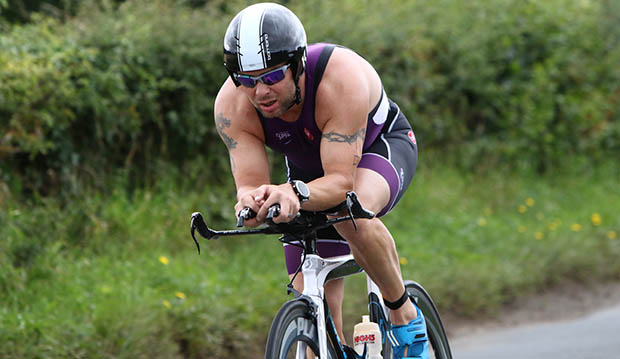
The best time to experiment with new gear, race strategies and simply being comfortable and confident is well before race day. These tips will help you simulate race day in your everyday training.
Nothing New on Race Day
You've probably heard this axiom. But simulating a triathlon during a training session is a great time to try new goggles, practice stripping off your wetsuit quickly, experiment with leaving your shoes clipped into your pedals or break in some race-day-only running shoes.
Plan Accordingly
Just like race day, plan for your race simulation ahead of time. If you're going to be anywhere but home, pack your transition bag ahead of time. The night before you do this kind of workout, don't forget to prep your race nutrition and hydration bottles, as well as any special gear you save just for race day.More Fun With Friends
Bringing a friend or three will not only add a camaraderie element and make your training session seem to pass by more quickly, it could also add a competitive atmosphere, just like you'll experience on race day.
Timing Is (Almost) Everything
Don't complete a really challenging training session the week before a race—you'll risk not recovering well enough to perform on the big day. Do your race simulation six or even seven weeks out from a race, and repeat it three to four weeks later—still at least three weeks before your race—to gauge improvements and reinforce skills.
If you're competing in a 70.3 or full-distance triathlon, you might want to limit your race day simulation to only half or a third of the actual race distance so you can effectively recover from the training session.
In the Zone
Set up your transition zone and try to replicate a race environment; you'll be in close quarters on race day, so you'll want to get used to working in a confined space. Your transition stall should be no wider or longer than a bath towel.
This is also an opportunity to practice executing transitions—either before or after you do the hard part of the workout. Even if you're doing your race simulation at home or indoors, you can still practice setting up and executing a transition.
Warm Up
Don't skip on the warmup. Your body needs to be primed if you're going to be swimming, cycling and running hard. Warm up for your race simulation the same way you plan to warm up on race day: getting wet, spinning your wheels or doing a short run.
Get Creative
If you don't have access to a safe open water swim venue, try setting up your bike trainer or transition space on a pool deck or near your swim. If you're doing a brick session without a swim and you have access to a running track, create a transition zone in the infield. If you're training from home—which for most may preclude swimming—you may have some additional transition zone flexibility and fewer worries about leaving your running shoes or bike unattended.
If you are able to ride on the road, mark a mount/dismount line so you can practice safe and efficient T1 and T2 skills. If you cannot chalk a line, use an immovable object like a fencepost or a tree as a viable substitute.
Try This Workout to Practice
Executing race day simulation workouts require planning, and it's a good idea to have structure for this kind of hard workout . If you're self-coached, consider a workout similar to the following.- 500m swim: 100m at race-pace, 200m at medium effort, 100m at hard effort and 100m at race-pace. Rest and repeat two to three, resting four minutes between sets if doing an Olympic–or longer–distance race.
- 40km bike: four sets of 2km race-pace-plus, 8km tempo; don’t rest between intervals.
- 10km run: 1600m five times at race pace, with 400m easy jog/recovery. This session is good for nearly any distance triathlon below a 140.6. An alternative might also be 800m at goal pace 10 times, with a 200m walk between efforts.
These are race-prep intervals that can be adjusted to accommodate various triathlon race distances. The rest periods indicated allow for multiple intervals as well as quicker recovery after the training session.
Record Your Results
If you're doing a race day simulation, log your training session so you can gauge improvement and even compare these training days to your race. Note how you felt, what you did well and what you want to improve. Note weather conditions—or if you were in a heated or air-conditioned space if indoors—as well as other external factors. The next time you execute a race day simulation, you'll have a detailed baseline and can try to recreate repeatable scenarios.
READ THIS NEXT: How to Avoid Race Day Mistakes








Discuss This Article